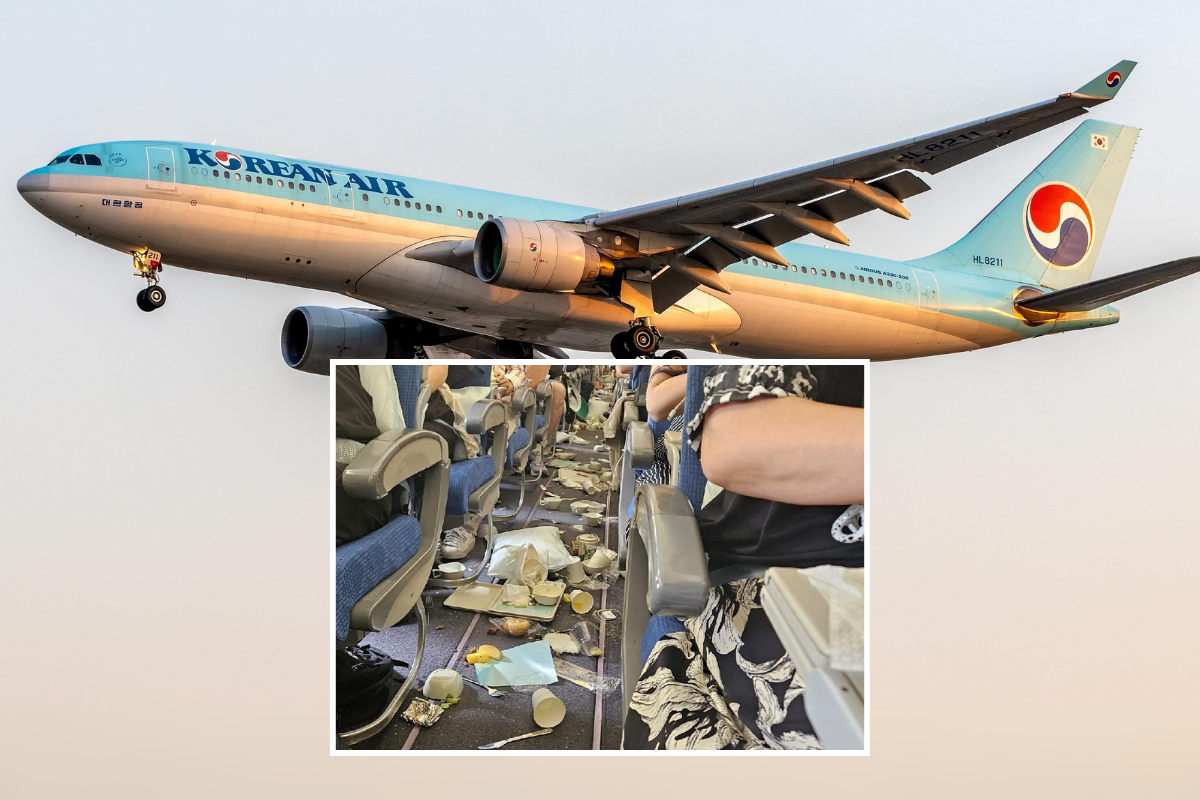
Ten passengers and four flight attendants were injured when a Korean Air Airbus A330 was rocked by severe turbulence, which sent meal trays and passengers flying during a flight from Seoul to Ulaanbaatar in Mongolia on Sunday.
Korean Air flight HL7584 departed Seoul Incheon Airport at around 8:30 am on August 4 for the three-hour regional flight when it was struck by turbulence right in the middle of the meal service.
The turbulence appears to have hit without warning with the plane suddenly dropping as passengers tucked into their meals. Anyone who wasn’t strapped in was sent flying towards the ceiling, along with anything else that wasn’t secured.
Photos shared on social media of the aftermath showed meal trays and other detritus scattered across the floor as flight attendants tended to the wounded.
Some of the injured complained of back and neck pain which would suggest an impact injury from hitting the cabin ceiling. Thankfully, unlike other recent turbulence injuries, Korean Air said there were so serious injuries.
At the time, the aircraft was flying over China near Tianjin but the pilots decided to continue onto Ulaanbaatar where a medical team were standing by to help the injured passengers and cabin crew.
Surprisingly, despite the mess left behind by the sudden drop in altitude, the aircraft left Ulaanbaatar for its return to South Korea just a few minutes behind schedule. The 24-year-old plane then flew to Vietnam and back the same day and has remained in service ever since.
The incident occurred just days after Korean Air announced that it would stop serving Cup Noodles as a mid-flight snack in Economy Class due to an increase in turbulence incidents.
The airline has become concerned that Cup Noodles, or ramyeon as they are known in South Korea, could cause serious scold injuries because the boiling hot water used to prepare them could be sent flying during turbulence.
Cup Noodles will still be available in premium cabins because there’s more personal space for passengers but the airline has discontinued their use in Economy because passengers are so tightly packed together.
The airline also recently announced that it would wrap up cabin services sooner to prevent turbulence-related injuries because most turbulence events occur as an aircraft is in its descent for landing.
Korean Air says it will now stop all cabin services at 40 minutes to landing rather than the previous cut off which was at 20 minutes to landing.
Both protocol changes were introduced following a review into how the airline deals with turbulence, which was prompted by the fatal Singapore Airlines turbulence incident in May that left dozens of passengers and crew seriously injured.
Mateusz Maszczynski honed his skills as an international flight attendant at the most prominent airline in the Middle East and has been flying ever since... most recently for a well known European airline. Matt is passionate about the aviation industry and has become an expert in passenger experience and human-centric stories. Always keeping an ear close to the ground, Matt's industry insights, analysis and news coverage is frequently relied upon by some of the biggest names in journalism.







